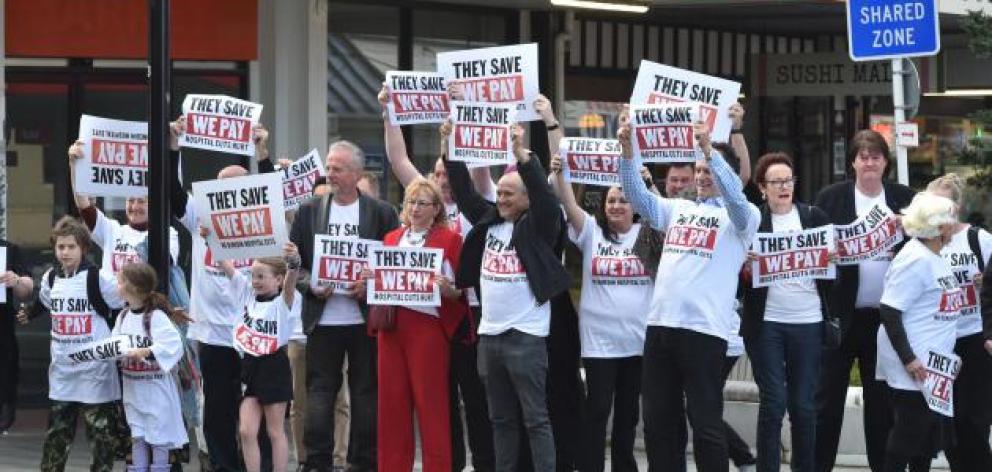
Yesterday Health Minister Shane Reti and Infrastructure Minister Chris Bishop came to Dunedin to announce that, utterly contrary to National’s pre-election rhetoric of building a hospital that would cater for the health needs of the region for generations, instead the government may only build half a hospital, if that.
National promised the South that the new hospital it pledged to fully fund would not be a patch-up job, but that is exactly what the two unpalatable options the government are considering entail.
Pending a rapid review of the entire project, either the new inpatient building will be drastically reduced in scope, including reducing the number of floors and delaying the fit-out of some areas until needed, or the new building may be parked and the old hospital site will be redeveloped.
The government has dithered for months, expensive months, on a project already costing millions of dollars a week. Costly consultants and planners have been trying to find cuts, time and money wasted as the coalition has come up with budgetary options which look like an amputation rather than keyhole surgery.
Yesterday it released a report it commissioned early this year, and which was delivered to ministers in May, which sets out just how expensive the new hospital has already been and how expensive it could become.
It is commendable that the government has released that report, sobering reading though it is.
But surely upon receipt of it was the time to engage with local leaders and the southern people about what to do regarding the project’s spiralling costs? While the Otago Daily Times has been reporting that the situation looked grim, what was presented yesterday is more dire, more drastic, than most expected.
Otago and Southland MPs, many of whom represent coalition parties, will likely bear the brunt of local anger at the looming downgrading of the hospital.
We are not indifferent to Dr Reti and Mr Bishop’s main argument, that at a possible $3 billion cost the new Dunedin hospital has become too expensive.
Yes, it is expensive, because providing proper healthcare in appropriate facilities is expensive. Proper healthcare is one of the few costs of government which taxpayers will stump up for unbegrudgingly.
Can a cost be put on the health of hundreds of thousands of people — not just in the immediate future but for decades ahead? This was to be an intergenerational, state-of-the-art hospital.
Now it looks like a series of compromises and potential calamities. Clinicians in Dunedin Hospital already work in cramped, leaky, inadequate facilities and struggle to do their professional best for the community which relies upon them at their time of need.
Cuts to this project will be paid for in the decades to come in terms of poorer health outcomes.
The ministers argued that paying for Dunedin means the likes of Nelson, Whangarei, Tauranga, Hawke’s Bay and Palmerston North would miss out, but those much-needed projects will also encounter the same funding problems that the Dunedin build has.
The ministers were adamant yesterday that the new hospital would be built within its new budget of $1.88 billion, stressing that that was an enormous investment in Dunedin.
It is, but it is not just an investment in Dunedin. It is an investment in Otago, Southland and New Zealand as a whole.
Cutting the budget of a hospital which caters for a quarter of New Zealand’s land mass and which is a critical piece of South Island health infrastructure — especially in a natural disaster — is appallingly short-sighted.
And lest we forget, the development of the new hospital in Dunedin was being done in conjunction with the University of Otago and Otago Polytechnic, as it was envisaged as a critical training for the doctors, nurses and allied health professionals of the future. Will the hodge podge the new hospital now looks likely to be, be able to cater to that need?
The one saving grace is that the outpatient building is so far along that it has to be finished. Blessedly, it remains on track to open in 2026.
But we want our hospital. All of our hospital. As was promised.
Get out there and march.











